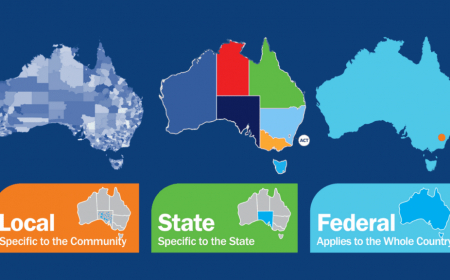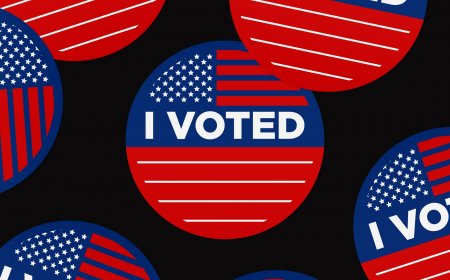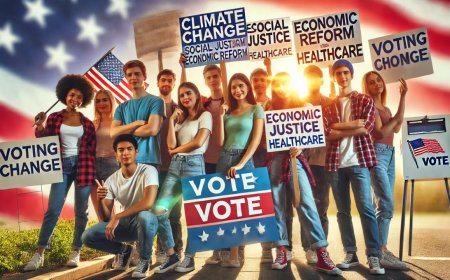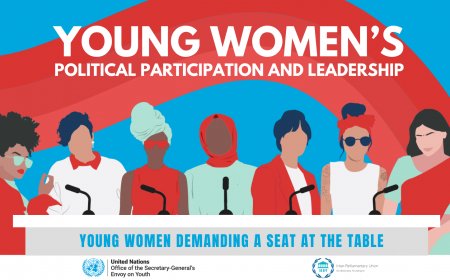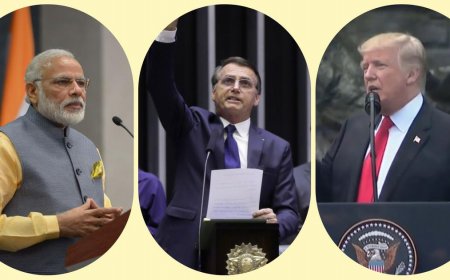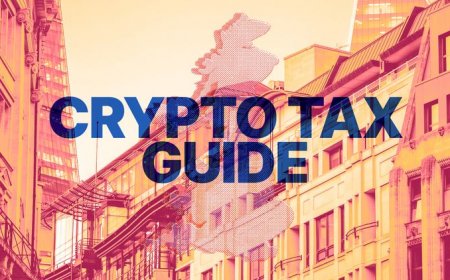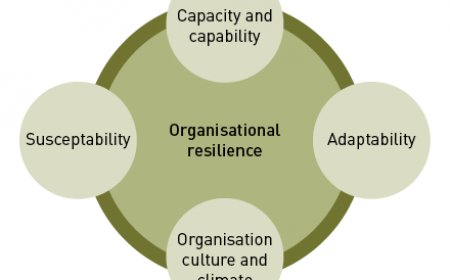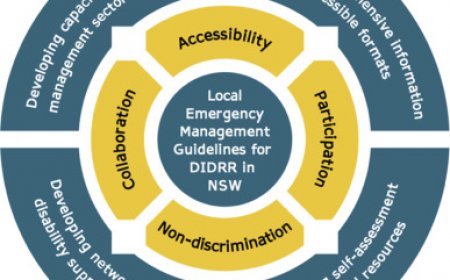Politics: Polarization and Bridging Divides in Democracies
Explore the complexities of political polarization and discover actionable strategies to bridge divides in democracies. Learn how economic inequality, social media, and cultural shifts contribute to division—and what we can do to heal them.
In today’s rapidly evolving political landscape, the concept of polarization has become a defining feature of modern democracies. From heated debates in legislative chambers to divisive rhetoric on social media platforms, the widening chasm between opposing ideologies is reshaping how societies function. As we delve into the intricate dynamics of political polarization, it becomes imperative to explore not only its causes but also potential solutions for bridging these divides. This article aims to provide a comprehensive analysis of the challenges posed by polarization while offering actionable strategies to foster unity in democratic systems.
Understanding Political Polarization
What Is Political Polarization?
Political polarization refers to the increasing ideological distance between individuals, groups, or political parties within a society. It manifests as an intense division where opposing sides adopt rigid stances, often viewing each other with hostility or distrust. In democracies, this phenomenon can undermine collaboration, hinder policymaking, and erode public trust in institutions.
At its core, polarization stems from deeply entrenched differences in values, beliefs, and priorities. These divisions are amplified by factors such as media bias , economic inequality , and cultural shifts . For instance, when citizens perceive their political opponents as existential threats rather than fellow stakeholders in governance, the foundation of democracy weakens.
"Democracy thrives on dialogue, compromise, and mutual respect. When polarization takes hold, these essential elements are replaced by gridlock and animosity."
Types of Polarization
Polarization can be categorized into three main types:
- Affective Polarization : Emotional dislike or distrust toward members of the opposing group.
- Issue Polarization : Disagreement over specific policies or issues, such as taxation or healthcare.
- Partisan Polarization : Strong loyalty to one's political party, often accompanied by disdain for the opposing party.
Each type contributes uniquely to the overall fragmentation of society, making it harder to find common ground.
The Role of Social Media in Amplifying Polarization
Social media platforms have revolutionized communication, enabling unprecedented connectivity. However, they have also contributed significantly to the rise of polarization. Algorithms designed to maximize engagement often prioritize sensational content, creating echo chambers where users are exposed primarily to information that aligns with their pre-existing views.
How Social Media Fuels Polarization
- Confirmation Bias : Users gravitate toward sources that validate their opinions, reinforcing existing beliefs.
- Misinformation : False narratives spread rapidly online, further deepening mistrust among different factions.
- Tribalism : Online communities foster a sense of belonging, but they can also encourage hostility toward outsiders.
For example, during election cycles, viral posts claiming voter fraud or rigged elections can exacerbate tensions, even if unsubstantiated. Similarly, inflammatory memes and hashtags reduce nuanced discussions to simplistic slogans, alienating those who hold differing views.
Case Study: The 2020 U.S. Presidential Election
The aftermath of the 2020 U.S. presidential election highlighted the dangers of social media-driven polarization. Despite no evidence of widespread fraud, millions of Americans believed false claims propagated online, leading to unprecedented levels of distrust in electoral processes. The Capitol riot on January 6, 2021, underscored how unchecked misinformation could escalate into real-world violence.
Causes of Political Polarization
Economic Inequality
One of the most significant drivers of polarization is economic disparity. When wealth and resources are concentrated in the hands of a few, resentment grows among marginalized groups. This economic divide often translates into political conflict, as competing interests vie for control over policies related to taxation, healthcare, and education.
Global Examples of Economic Polarization
- United States : The growing gap between the wealthiest 1% and the middle class has fueled populist movements on both the left (e.g., Bernie Sanders) and the right (e.g., Donald Trump).
- India : Rapid urbanization and technological advancements have widened the rural-urban divide, contributing to political unrest.
- Brazil : Economic inequality has exacerbated tensions between pro-development policies and environmental conservation efforts.
Impact on Democracy
Economic inequality undermines democratic principles by giving disproportionate influence to wealthy elites. Campaign financing laws, lobbying, and corporate donations often skew policymaking in favor of special interests, leaving ordinary citizens feeling disenfranchised.
Cultural Shifts
Cultural changes, including evolving attitudes toward gender, race, and religion, have sparked intense debates in many democracies. Traditionalists may feel threatened by progressive reforms, while advocates for change argue that inclusivity strengthens societal cohesion. These clashes highlight the tension between preserving heritage and embracing modernity.
Generational Divide
Younger generations tend to embrace more liberal values, such as LGBTQ+ rights and climate action, while older generations may cling to traditional norms. This generational divide intensifies polarization, particularly in countries with aging populations like Japan and Germany.
Religious vs. Secular Tensions
In nations like Turkey and India, the rise of religious nationalism has polarized societies along secular-religious lines. Debates over issues like headscarves in schools or religious symbols in public spaces reflect broader struggles over national identity.
Partisan Gerrymandering
Gerrymandering—the manipulation of electoral district boundaries—exacerbates polarization by ensuring safe seats for incumbents. This practice reduces competition and incentivizes politicians to cater exclusively to their base rather than seeking bipartisan consensus.
Impact on Representation
When districts are drawn to favor one party, voters in the minority lose their voice. For example, in North Carolina, Republican-controlled legislatures created maps that heavily favored GOP candidates, despite closely divided statewide voter preferences.
Legal Challenges
Efforts to combat gerrymandering include lawsuits challenging redistricting plans and initiatives promoting independent commissions. California’s Citizens Redistricting Commission serves as a model for reducing partisan manipulation.
Consequences of Polarization
Erosion of Trust in Institutions
As polarization intensifies, public confidence in government institutions declines. Citizens begin to question the legitimacy of elections, judicial decisions, and legislative processes. This erosion of trust undermines the very fabric of democracy, making it difficult to implement effective governance.
Distrust in Media
Media outlets themselves are often polarized, catering to specific audiences and reinforcing biases. Fox News and MSNBC, for instance, present starkly contrasting narratives, leaving viewers confused about objective truths.
Judicial Polarization
Even courts, traditionally seen as impartial arbiters, face accusations of partisanship. Supreme Court appointments in the U.S. have become battlegrounds, with confirmation hearings devolving into partisan showdowns.
Policy Gridlock
When lawmakers refuse to cooperate across party lines, critical issues remain unresolved. Whether addressing climate change, healthcare reform, or infrastructure development, policy gridlock stifles progress and leaves pressing problems unaddressed.
Healthcare Example
In the U.S., attempts to repeal or expand the Affordable Care Act (ACA) have repeatedly failed due to partisan gridlock. While Democrats advocate for universal coverage, Republicans push for market-based solutions, leaving millions uncertain about their future access to care.
Climate Change Stalemate
Similarly, global efforts to combat climate change suffer from polarization. Skeptics dismiss scientific consensus, delaying urgent action needed to mitigate environmental disasters.
Social Fragmentation
Beyond politics, polarization seeps into everyday life, dividing families, workplaces, and neighborhoods. The inability to engage in constructive conversations fosters isolation and alienation, weakening social bonds.
Workplace Dynamics
Employees increasingly bring their political views into professional settings, creating uncomfortable environments. Managers must navigate delicate situations to maintain productivity and morale.
Community Relations
Local governments struggle to address community needs when residents are divided along political lines. Public meetings on zoning laws or school funding can devolve into shouting matches, hindering progress.
Strategies for Bridging Divides
Promoting Civic Education
A well-informed electorate is crucial for reducing polarization. By investing in civic education programs, governments can equip citizens with the knowledge and skills needed to navigate complex political landscapes. Emphasizing critical thinking, empathy, and active participation empowers individuals to engage constructively with diverse perspectives.
Curriculum Innovations
Modern civics curricula incorporate simulations, debates, and service-learning projects to teach students about democracy in action. Finland’s education system, renowned for fostering critical thinking, offers valuable lessons for other nations.
Adult Education Initiatives
Programs targeting adults, such as town halls and workshops, help bridge generational gaps and promote lifelong learning. Libraries and community centers play vital roles in hosting these events.
Encouraging Bipartisan Collaboration
Leaders must prioritize collaboration over confrontation. Initiatives such as joint task forces, cross-party committees, and coalition-building efforts can break down barriers and foster cooperation. Highlighting shared goals—such as national security, economic prosperity, and environmental sustainability—can unite disparate factions under a common cause.
Successful Models
- Sweden’s All-Party Coalitions : During crises, Swedish leaders form temporary alliances to address emergencies, demonstrating flexibility and pragmatism.
- New Zealand’s Mixed-Member Proportional System : Encourages multiparty coalitions, ensuring diverse representation in parliament.
Reforming Electoral Systems
Proportional representation and ranked-choice voting offer alternatives to winner-takes-all systems, which often exacerbate polarization. By allowing voters to express nuanced preferences, these reforms promote inclusivity and reduce the incentive for extreme partisanship.
Ranked-Choice Voting Benefits
Ranked-choice voting allows voters to rank candidates in order of preference, eliminating “spoiler” effects and encouraging candidates to appeal broadly rather than narrowly. Maine and Alaska have successfully implemented this system in recent years.
Case Studies: Lessons from Around the World
United States: A Divided Nation
The United States exemplifies the challenges posed by polarization. Deep divisions along racial, economic, and ideological lines have led to contentious elections, protests, and even violence. Efforts to bridge these gaps include grassroots movements advocating for racial justice, gun control, and LGBTQ+ rights.
Civil Rights Movement Legacy
The Civil Rights Movement of the 1960s provides inspiration for contemporary activists. Through nonviolent resistance and coalition-building, leaders like Martin Luther King Jr. achieved landmark legislation advancing equality.
Germany: Overcoming Historical Divisions
Post-reunification Germany faced significant challenges in integrating East and West. Through targeted investments, cultural exchange programs, and inclusive policies, the country successfully mitigated regional disparities and built a cohesive national identity.
Lessons Learned
Germany’s emphasis on reconciliation and economic integration offers a roadmap for healing historical wounds. Truth-telling and acknowledgment of past injustices paved the way for forgiveness and unity.
South Africa: Healing After Apartheid
South Africa’s transition from apartheid to democracy required immense effort to reconcile past injustices. Truth and Reconciliation Commissions played a pivotal role in fostering forgiveness and understanding, setting an example for other nations grappling with historical grievances.
Key Takeaways
Restorative justice approaches prioritize healing over punishment, empowering victims and perpetrators alike to move forward collectively.
Tips for Engaging Constructively in Polarized Times
- Listen Actively : Seek to understand others’ viewpoints without judgment.
- Focus on Common Ground : Identify shared values and objectives.
- Avoid Personal Attacks : Keep discussions respectful and issue-focused.
- Educate Yourself : Stay informed about diverse perspectives and credible sources.
- Engage Locally : Participate in community initiatives to build connections.
Comparison Table: Polarized vs. Unified Democracies
Review: Verdict
While political polarization poses significant challenges, it is not insurmountable. By adopting evidence-based strategies, fostering open dialogue, and prioritizing inclusivity, democracies can overcome divisions and thrive. The key lies in recognizing our shared humanity and committing to collective progress.
Conclusion
Polarization threatens the foundations of democracy, but it also presents an opportunity for reflection and renewal. As we strive to bridge divides, let us remember that unity does not mean uniformity—it means celebrating diversity while working toward common goals. Together, we can create a future where all voices are heard, respected, and valued.
10 FAQs
-
What is political polarization?
Political polarization refers to the growing ideological gap between opposing groups or parties. -
How does social media contribute to polarization?
Social media amplifies polarization through echo chambers, misinformation, and tribalism. -
Can economic inequality cause polarization?
Yes, economic disparities fuel resentment and deepen political divides. -
What role does gerrymandering play?
Gerrymandering creates safe seats, discouraging bipartisan cooperation. -
How can civic education help?
Civic education promotes critical thinking and informed participation, reducing polarization. -
Are there successful examples of overcoming polarization?
Countries like Germany and South Africa have made strides in healing divisions. -
Why is trust in institutions important?
Trust ensures legitimacy and enables effective governance. -
What are some tips for constructive engagement?
Listen actively, focus on common ground, and avoid personal attacks. -
How can electoral systems be reformed?
Proportional representation and ranked-choice voting promote inclusivity. -
Is polarization reversible?
With concerted effort, polarization can be mitigated and unity restored.
What's Your Reaction?
 Like
0
Like
0
 Dislike
0
Dislike
0
 Love
0
Love
0
 Funny
0
Funny
0
 Angry
0
Angry
0
 Sad
0
Sad
0
 Wow
0
Wow
0



